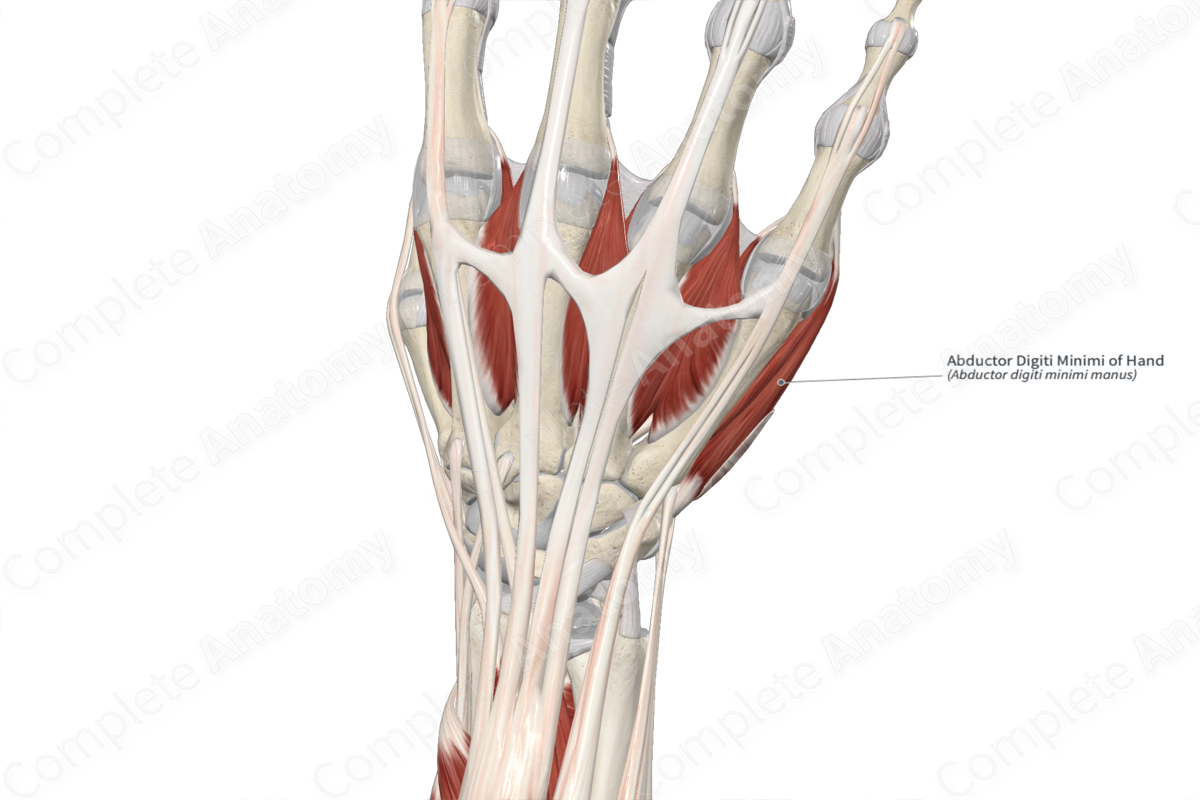
Quick Facts
Origin: Pisiform bone and tendon of flexor carpi ulnaris.
Insertion: Medial aspect of base of proximal phalanx of little finger.
Action: Abducts little finger at its metacarpophalangeal joint.
Innervation: Deep branch of ulnar nerve (C8-T1).
Arterial Supply: Deep palmar branch of ulnar artery and superficial palmar arch.
Related parts of the anatomy
Origin
The abductor digiti minimi muscle of hand originates from the:
- pisiform bone;
- tendon of flexor carpi ulnaris;
- pisohamate ligament.
Insertion
The fibers of the abductor digiti minimi muscle of hand travel inferomedially and insert onto the:
- medial aspect of the base of the proximal phalanx of little finger;
- extensor expansion of little finger.
Key Features & Anatomical Relations
The abductor digiti minimi muscle of hand is found in the hypothenar compartment of the hand. It is a short, fusiform type of skeletal muscle that forms the medial margin of the palm of the hand. It is located:
- anterior (superficial) to the opponens digiti minimi muscle of hand;
- posterior (deep) to the palmaris brevis muscle;
- medial to the flexor digiti minimi muscle of hand.
Actions & Testing
The abductor digiti minimi muscle of hand abducts the proximal phalanx of little finger (i.e., draws it away from the longitudinal axial line of the middle finger) at its metacarpophalangeal joint. It can be tested by abducting the proximal phalanx of little finger at the fifth metacarpophalangeal joint against resistance (Standring, 2016).
References
Standring, S. (2016) Gray's Anatomy: The Anatomical Basis of Clinical Practice. Gray's Anatomy Series 41st edn.: Elsevier Limited.
Learn more about this topic from other Elsevier products





